Impact of E×B flow shear stabilization on particle confinement and density peaking at JET
W BUANGAM, J GARCIA, T ONJUN,3 and JET Contributors
1 School of Manufacturing Systems and Mechanical Engineering, Sirindhorn International Institute of Technology, Thammasat University, Pathumthani 12120, Thailand
2 CEA, IRFM, Saint-Paul-lez-Durance F-13108, France
3 Thailand Institute of Nuclear Technology, Chatuchak 10900, Thailand
Abstract The impact of the ×E B flow shear stabilization on particle transport and density peaking at JET is analyzed in the framework of integrated modelling with the CRONOS code.For that purpose,plasmas from a power scan which show a significant increasing of density peaking with the injected neutral beam injection power have been used as a modeling basis. By means of simulations with the quasilinear model GLF23 for the heat and particle transport,a strong link between the particle confinement and ×E B flow shear stabilization is found.This is particularly important close to the pedestal region where the particle pinch direction becomes strongly inward for high ×E B flow shear values.Such impact introduces some non-negligible deviation from the well-known collisonality dependence of the density peaking, whose general trend has been also obtained in the framework of this modelling by performing pedestal density scans.
Keywords: particle confinement, density peaking, flow shear, transport(Some figures may appear in colour only in the online journal)
1. Introduction
Achieving good thermal energy confinement is a priority for the efficient production of fusion energy. However, short-range instabilities producing microturbulence or long-range instabilities leading to magnetohydrodynamics severely enhance perpendicular heat and particle transport leading to confinement degradation. Since fusion energy depends highly on ions, particularly deuterium and tritium,confinement,therefore it is desired to have peaked plasma density profiles.However,there are some physical quantities which are well-known to degrade the thermal and particle confinement.
One example of confinement degradation is the injected power which obtained in dedicated experimental analysis used for the creation of the IPB98(y, 2) scaling law. The confinement is related to input power asτ~P-0.69.However, recent power scan experiments performed both at JET-ILW [1] and DIII-D [2] with neutral beam injection(NBI) power showed that the power degradation of thermal energy confinement was weaker than that expected from IPB98(y, 2) scaling [3], resulting in a weak decrease of normalized thermal energy confinement at high power.
First principle modelling performed with JET C-wall discharges of core and edge regions showed several physical quantities that can play a role on such deviation from expected scaling laws [4]. The NBI power has stabilizing effects in the core and edge regions. In the core region, they reduce ion heat fluxes due to a combination of fast ions and electromagnetic effects, which reduce turbulence driven by ion temperature gradient (ITG) modes. In the pedestal, higher pressure due to the increased Shafranov-shift is obtained with auxiliary heating power. Such increased pedestal is enhanced with power due to the increase of fast ion content, which does not contribute to turbulence when the injected power is increased and therefore can increase central pressure in an efficient way.In JET-ILW,the impact of electromagnetic effects and fast ions has been shown to play an important role as well [5].
Whereas the reduction of heat transport by ×E Bflow shear in the inner part of the plasma core seems to be not dominant, the situation can be different in another plasma locations or transport channels. Gyrokinetic simulations have shown that ×E Bflow shear could play and important role atρ= 0.64, withρthe normalized toroidal flux [6].
The particle transport in such plasma conditions has been much less analyzed although it shows interesting trends too.For instance, in the power scan performed in JET-ILW with lower power degradation, there was a significant increase in density peaking while the line average density remained nearly unchanged. Some well-known factors could play a role on increase in density peaking such as, collisionality (through the change of turbulence characteristics) [7], or increasing NBI fueling [8] which significantly change with the injected NBI power. However, there are indications that ×E Bflow shear could play a significant role on particle confinement as shown by modeling[9]and experiments performed on DIII-D[10].Indeed,there are some theoretical analyses which suggest the impact of the ×E Bflow shear on particle diffusivity due to the resulted transition to reduced turbulence regimes [11–14]. Moreover,recent nonlinear gyrokinetic simulations have demonstrated a strong impact of ×E Bflow shear on the particle pinch [15].
Therefore, in this paper the role of ×E Bflow shear on particle transport and in particular on density peaking is analyzed by means of integrated modeling simulations performed with the CRONOS suite of codes[16].The main goal is to evaluate whether the ×E Bflow shear might impact the density peaking and the results will be compared with the role of other factors as the collisionality or the NBI fueling. For that purpose, a full integrated modelling framework is required in order to evaluate whether the impact of these physical mechanisms is different in different parts of the plasma. A power scan from JET-ILW, in which there is an increase of density peaking with an increasing of NBI power,is used as a way of testing the models applied and performing dedicated ×E Bflow shear studies for the particle channel.
This work is organized as follows: brief descriptions of relevant components of the CRONOS code, together with the models applied are presented in section 2,the comparison of the results from the modelling set-up and JET-ILW power scan plasmas is shown in section 3;the effect of ×E Bflow shear on the particle pinch are described in section 4; ×E Bflow shear scans with self-consistent simulations are described in section 5;the effect of pedestal density on density peaking when using GLF23 model is described in section 6; and the conclusion is given in section 7.
2. Modelling set-up
The CRONOS suite of codes is a 1D transport solver with general 2D magnetic equilibrium,for predictive simulation of a full tokamak discharge. The CRONOS code combines various modules, in which each module is responsible for computing different physical phenomena, such as transport,heating and fueling.
The equations solved in this paper are the following ones[16]:

wherePe,iare the electron/ion pressures,qe,ithe heat flux flowing through electrons/ions,Qe,ithe electron/ion heat sources,nethe electron density,Γethe electron particle flux,Sethe electron particle sources and V the plasma volume.Such equations are solved self-consistently in order to obtainPe,iandne.
Since the experimental basis for performing analysis of the role of ×E Bflow shear on the particle transport is a set of discharges from a power scan showing a significant deviation from the IPB98(y, 2) scaling, models for core heat and particle transport together with pedestal top pressure must be combined[4]. Therefore, the CRONOS suite of codes has been used for performing self-consistent simulations including core temperatures and density and edge pedestal pressure.The predictive core simulations have been carried out with two transport models for turbulent transport,Bohm-gyroBohm[17]and GLF23[18]which have been widely used for JET plasmas analyses[9,19,20]and with NCLASS[21]for calculating the neoclassical transport.The use of the model Bohm-gyroBohm is justified because it is a well-known model that usually works well with JET data and yet it has no dependence on the ×E Bflow shear.The accuracy of GLF23 including ×E Bflow shear will be compared to BohmgyroBohm.
Whereas a newer version of the GLF23 model is available,called trapped gyro landau fluid(TGLF)[22],which has enhanced treatment of trapped electron modes (TEM), i.e.turbulence caused by trapped electrons, we use here GLF23 as it has been shown that the plasmas considered in this paper are in the ITG domain [5] for which GLF23 still gives good results with JET,reproducing both temperatures and densities with acceptable accuracy [9]. The validity of GLF23 to perform the analysis aimed in this paper will be tested by comparing the results with experimental data.
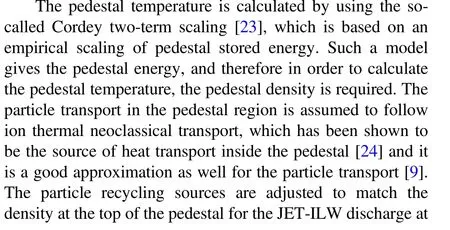
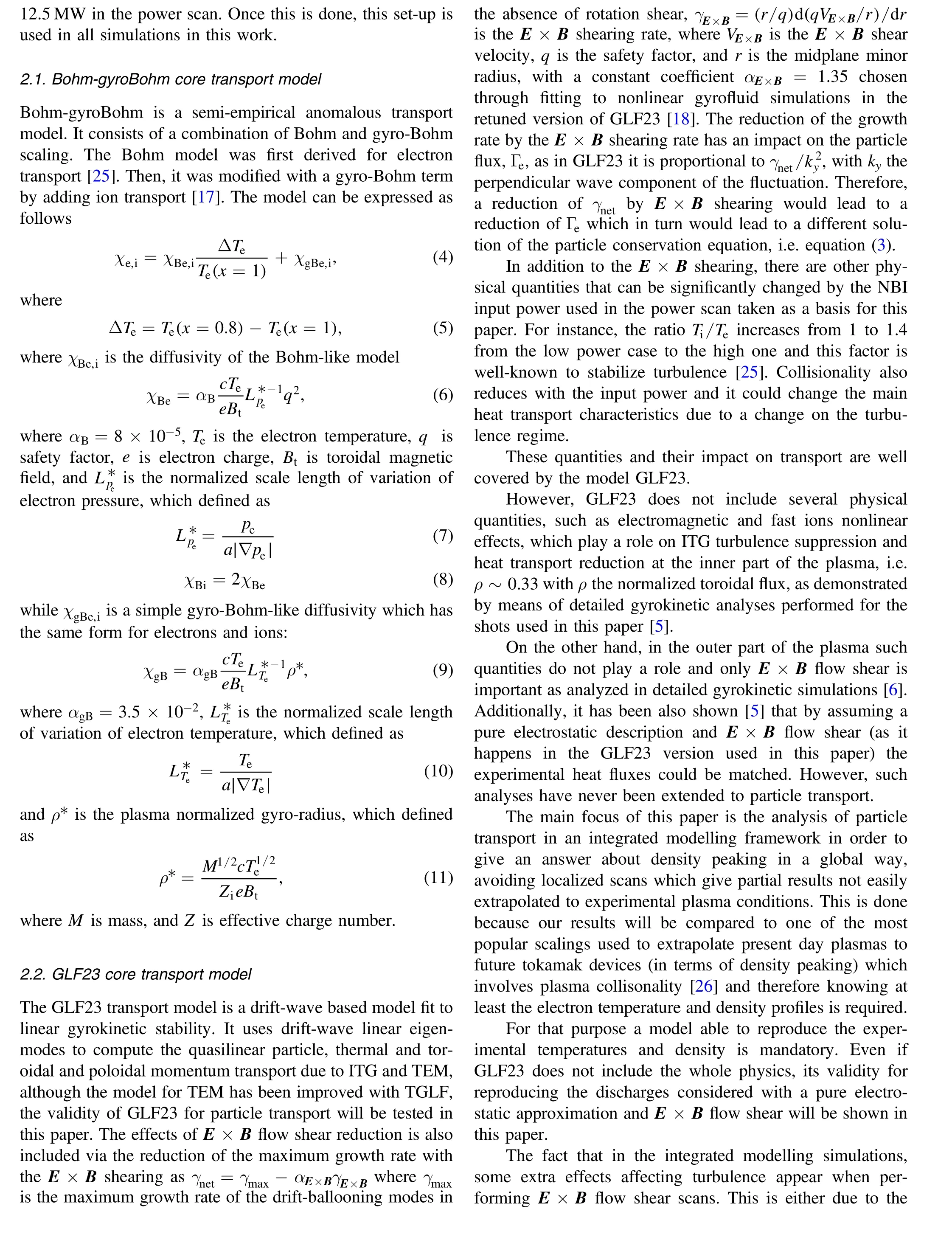
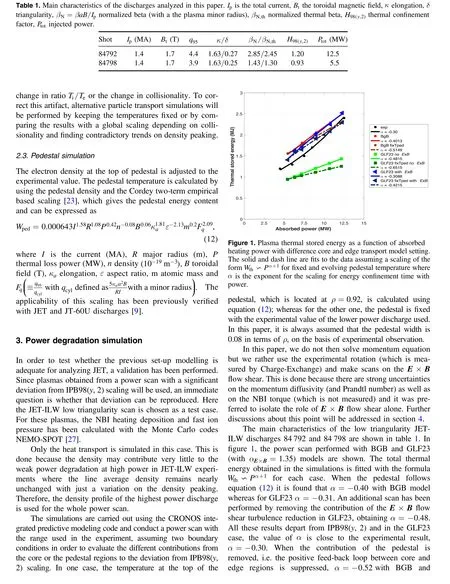
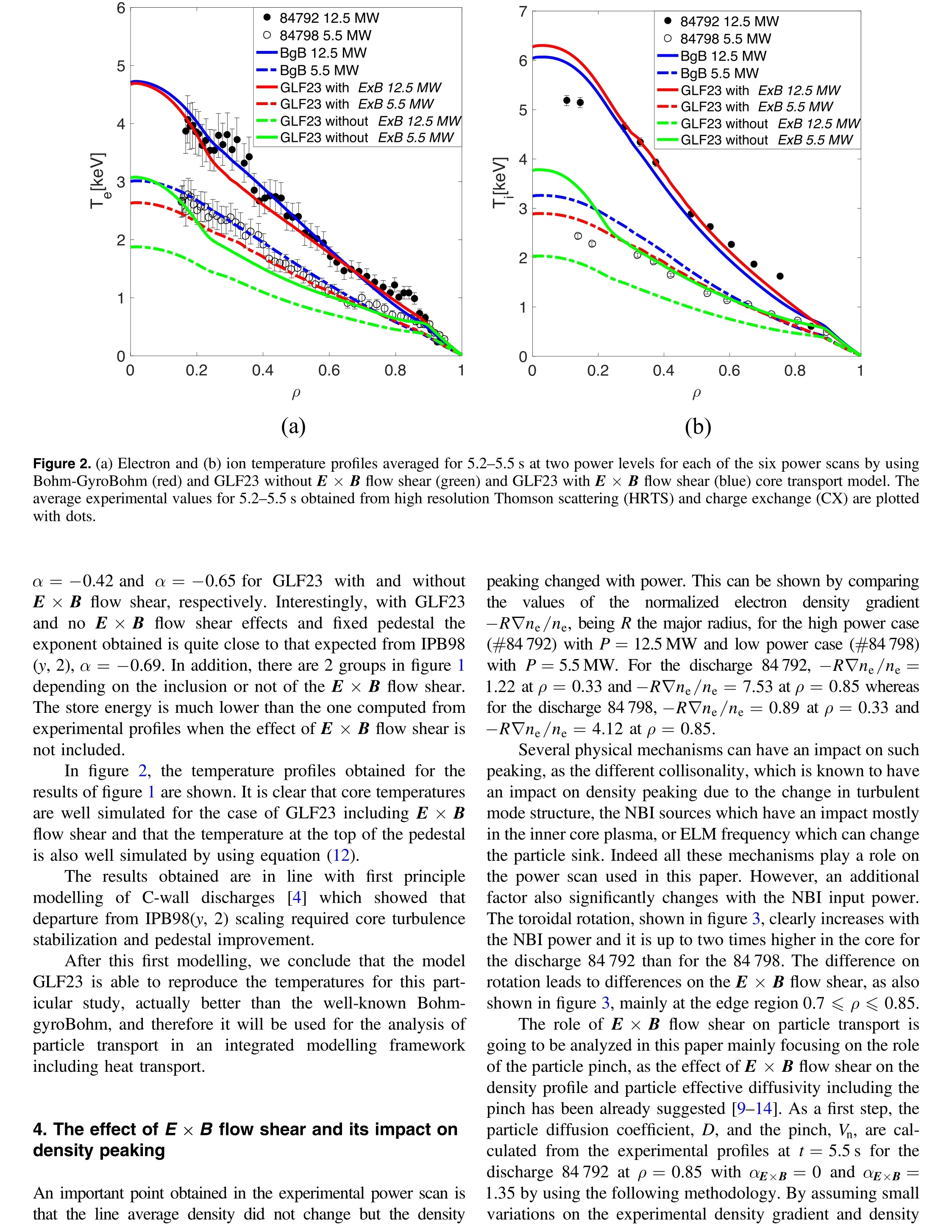

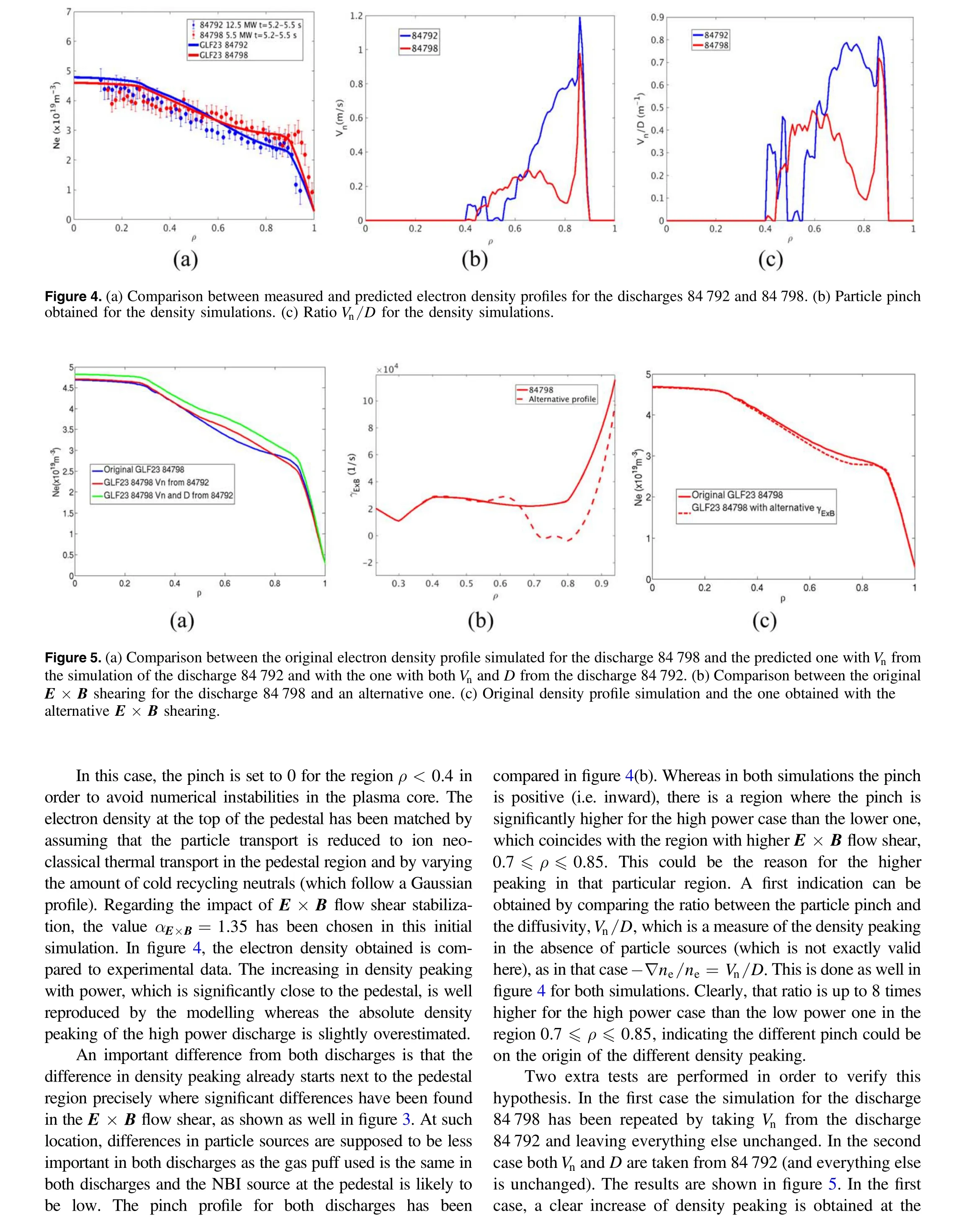
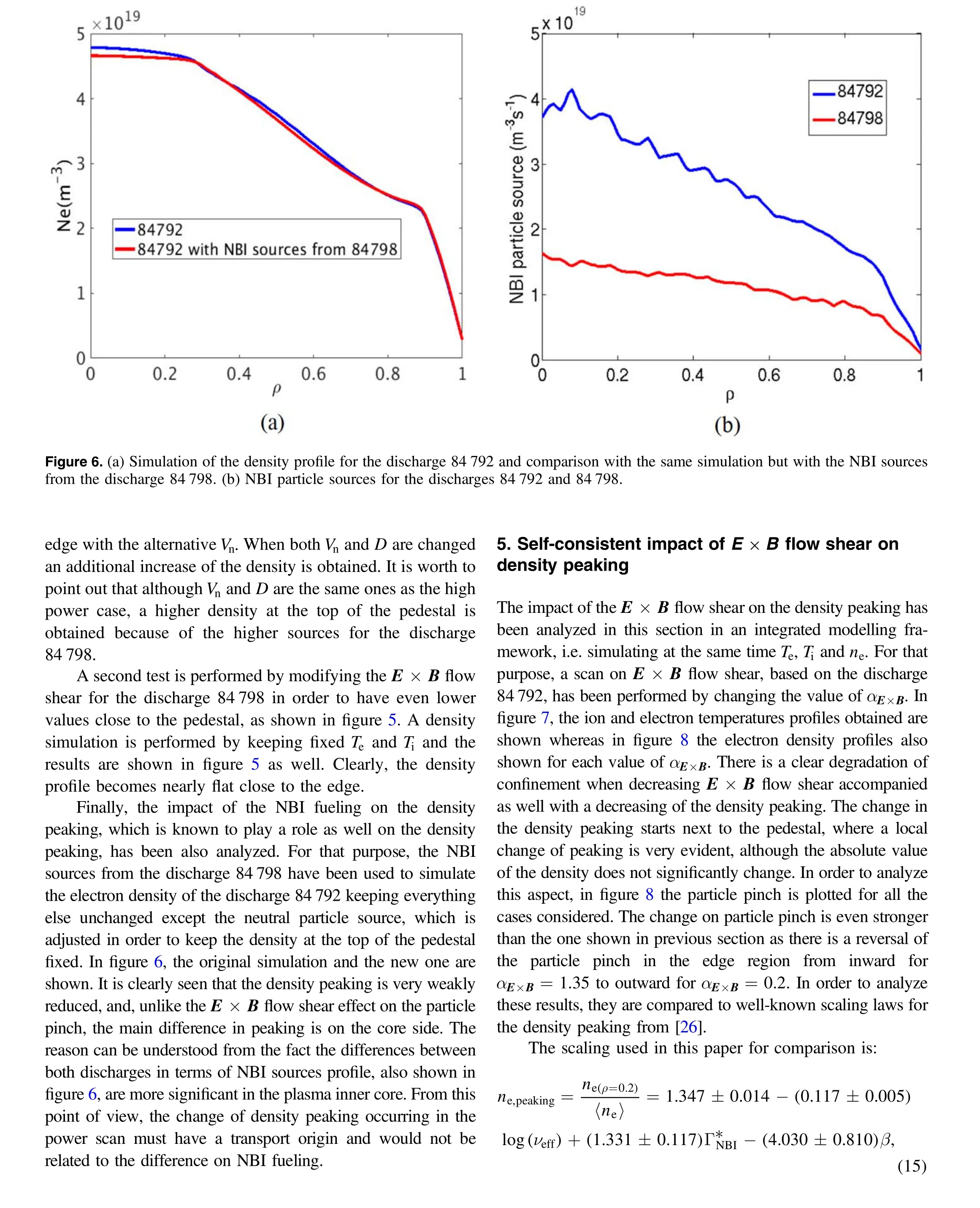
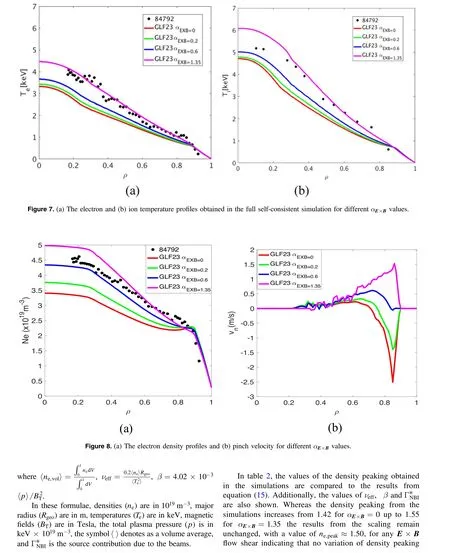
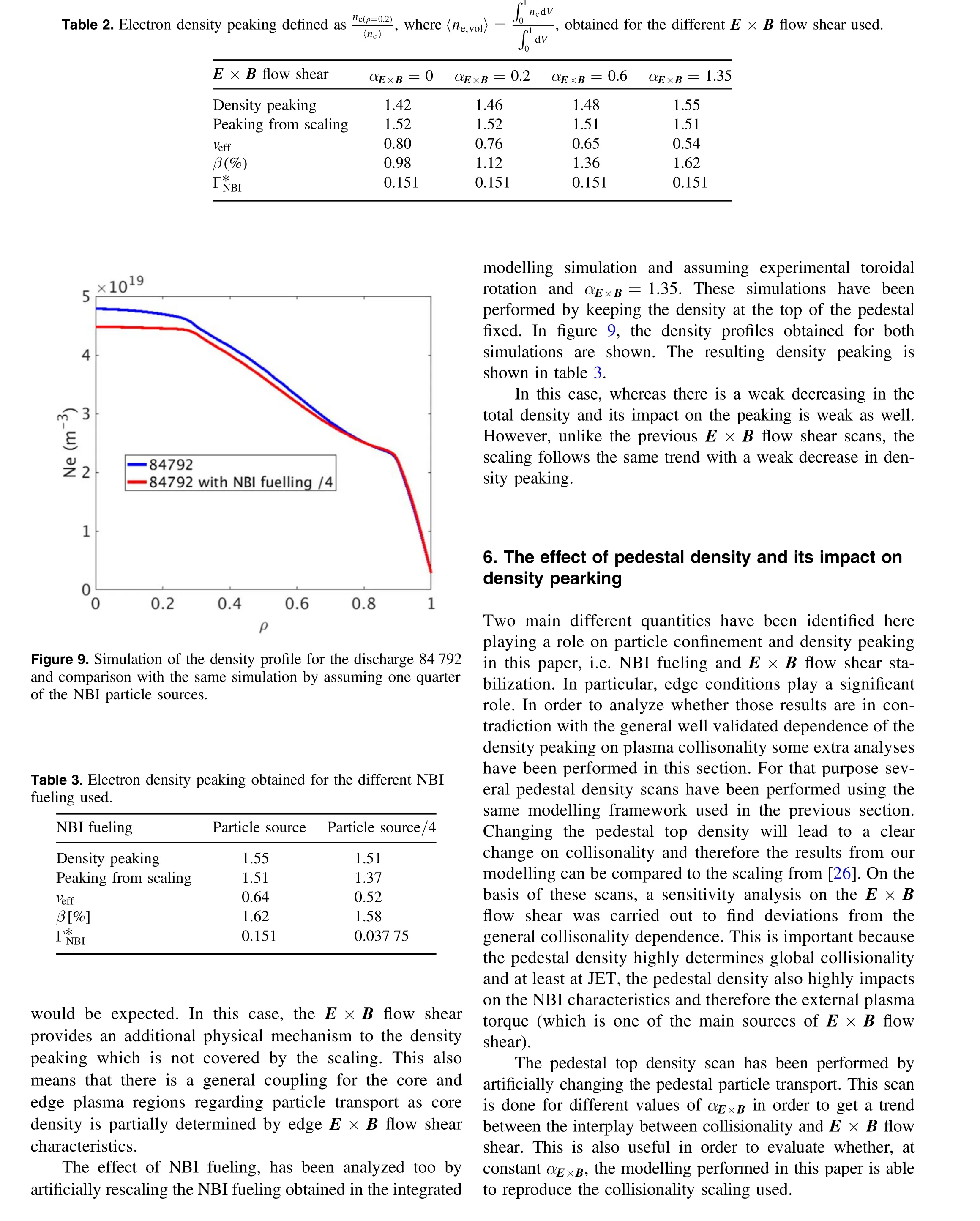
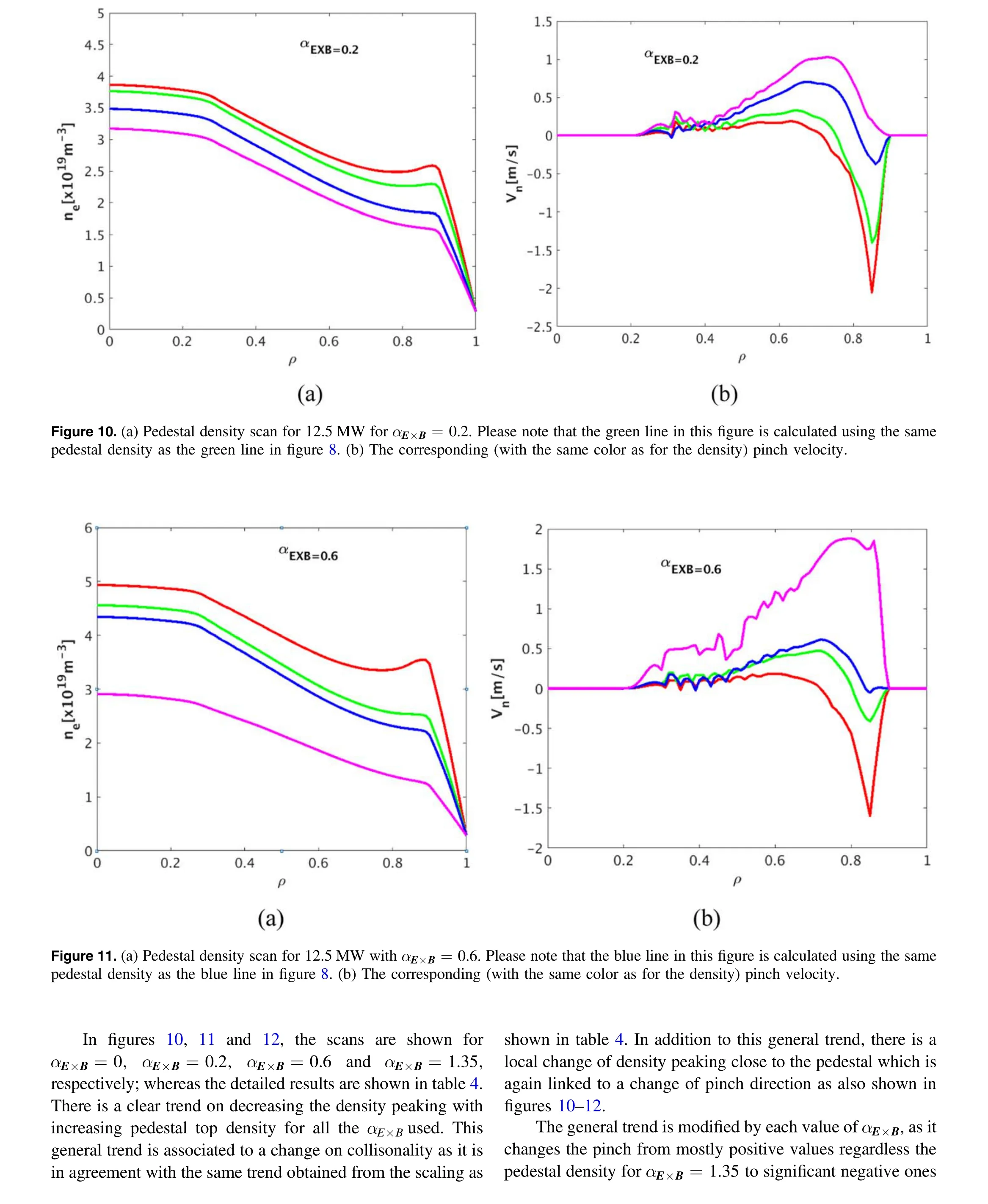
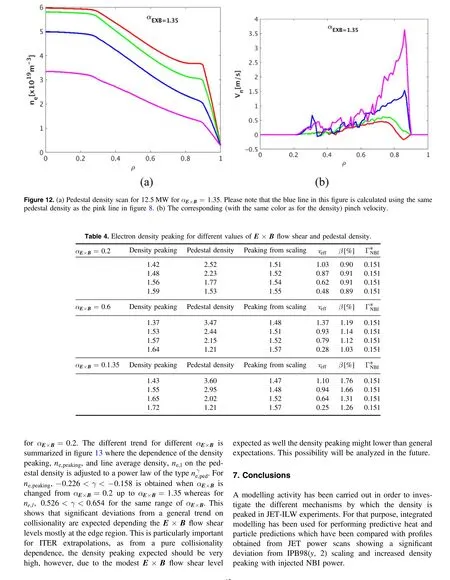
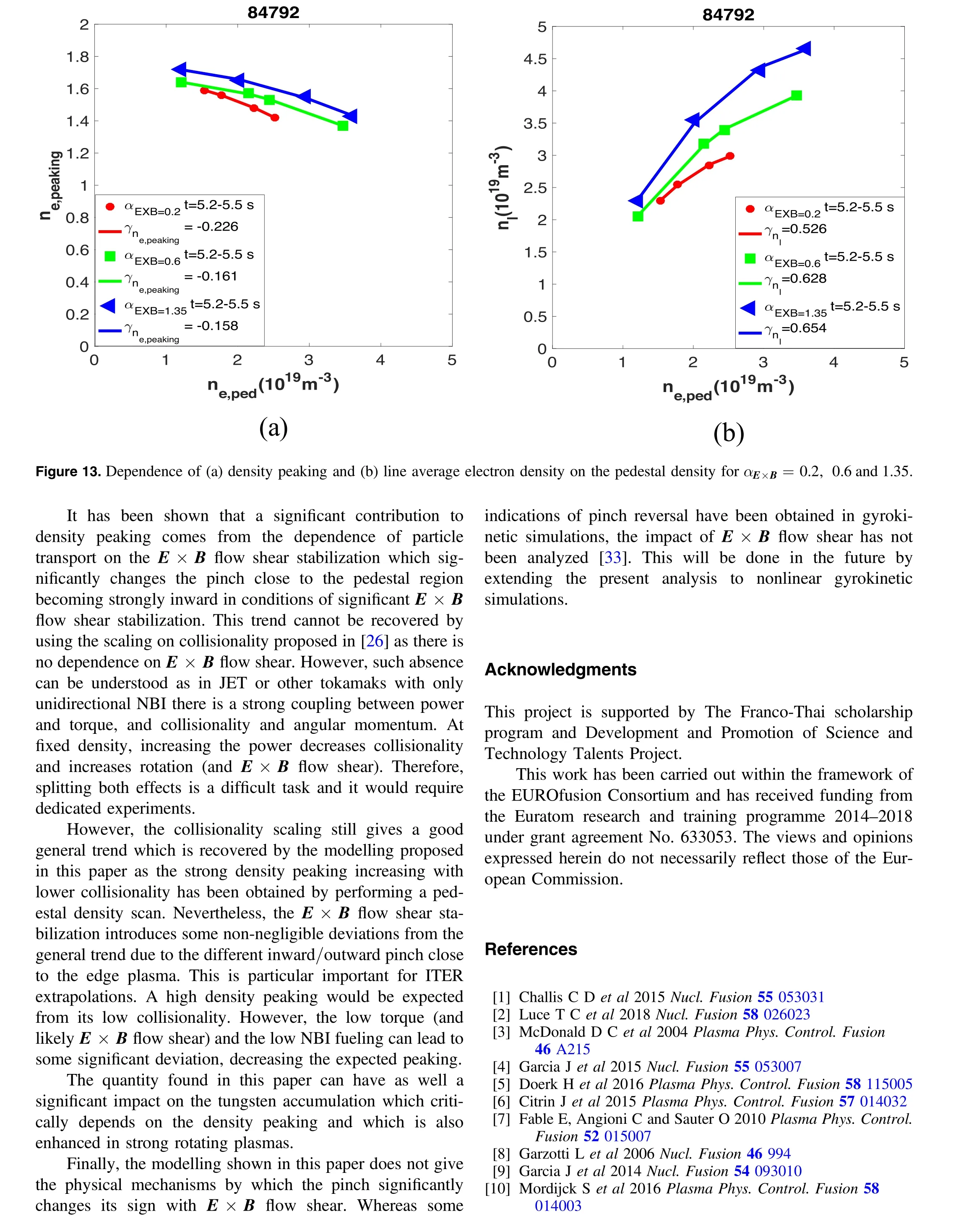

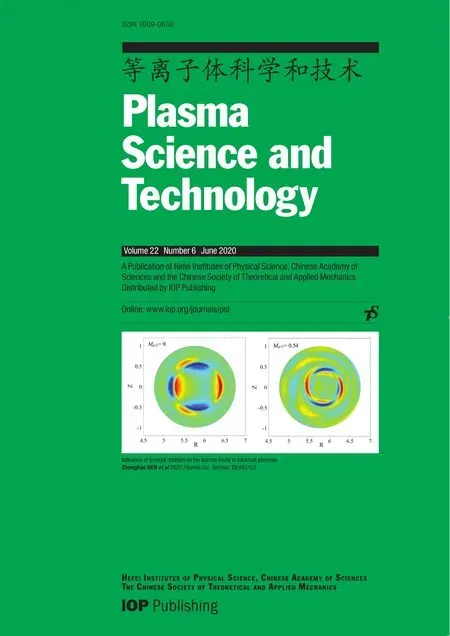 Plasma Science and Technology2020年6期
Plasma Science and Technology2020年6期
- Plasma Science and Technology的其它文章
- First-principles study on the mechanical properties and thermodynamic properties of Mo–Ta alloys
- Formation mechanism of Al2O3/MoS2 nanocomposite coating by plasma electrolytic oxidation (PEO)
- Estimation of the sheath power dissipation induced by ion cyclotron resonance heating
- Influence of toroidal rotation on the tearing mode in tokamak plasmas
- Conversion between Vickers hardness and nanohardness by correcting projected area with sink-in and pile-up effects
- In-port-plug transmission line design of the ITER plasma position reflectometer
